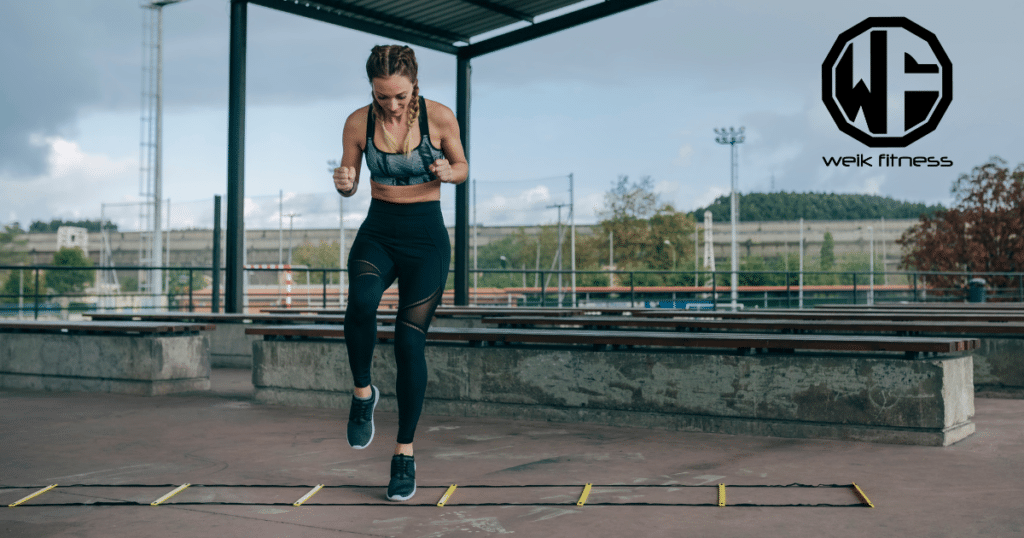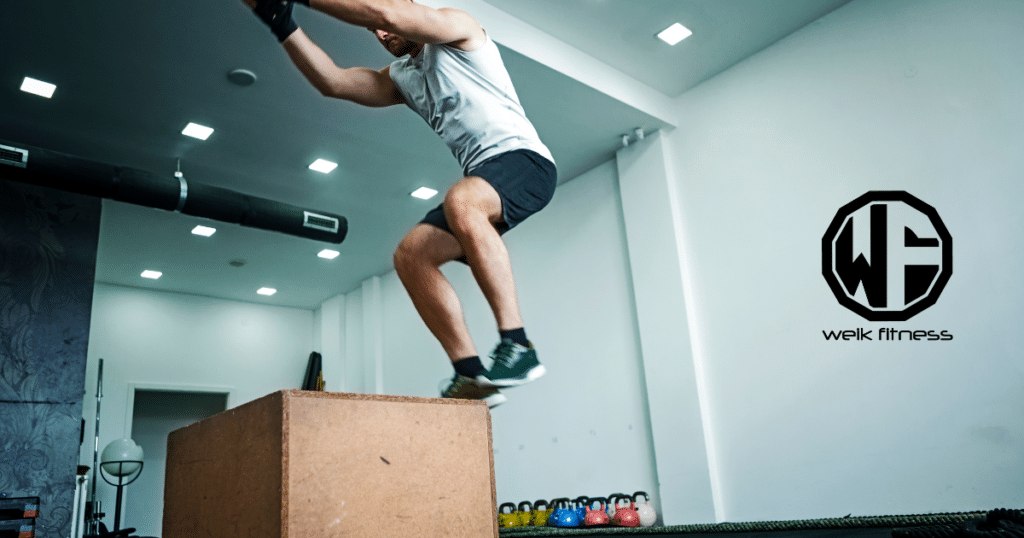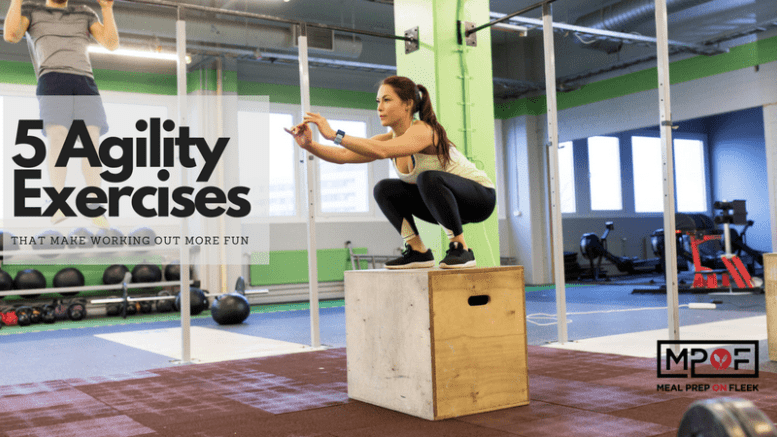5 Agility Exercises That Make Working Out More Fun
When it comes to cardiovascular exercise, not many people rank it on top of their to-do list. With that being said, you can actually make cardio fun by including these 5 agility exercises. What’s even better, is the fact that you don’t need fancy equipment in order to complete them. All you need is yourself, some easy to find household items and enough space around you that you can complete the 5 agility exercises safely.
*Note: Make sure you warm up for 5-10 minutes before moving into these agility exercises.
Disclaimer: This article is for informational purposes only and is not meant to treat or diagnose any condition. It is recommended that you speak with your doctor before starting any exercise program, changing your daily nutrition, or adding any supplements to your regimen.
Table of contents

What Are the Purpose of Agility Exercises?
Agility exercises are designed to improve a person’s ability to move quickly and change direction efficiently while maintaining control and balance. The purpose of these exercises extends to various domains, including sports, fitness, rehabilitation, and everyday activities. Here are some of the key purposes of agility exercises:
- Enhanced Performance in Sports:
- Quick Direction Changes: Many sports require rapid changes in direction, such as soccer, basketball, and tennis. Agility exercises help athletes perform these movements more effectively.
- Improved Reaction Time: Athletes often need to respond quickly to unexpected situations, and agility training helps improve their reaction time.
- Better Coordination: Agility exercises enhance coordination between different parts of the body, leading to more efficient and precise movements.
- Injury Prevention:
- Strengthening Muscles and Joints: Agility exercises help strengthen the muscles and joints, reducing the risk of injuries.
- Improved Balance and Stability: Better balance and stability help prevent falls and other injuries, especially in dynamic and unpredictable environments.
- Enhanced Functional Fitness:
- Everyday Activities: Improved agility can make everyday movements, such as walking, running, or carrying objects, more efficient and safer.
- Workplace Benefits: Jobs that require physical activity, such as firefighting, law enforcement, or construction, benefit from enhanced agility.
- Cognitive Benefits:
- Improved Mental Flexibility: Agility training can improve mental flexibility and the ability to process information quickly, as many exercises require quick decision-making and adaptation.
- Increased Focus and Concentration: Engaging in agility exercises often requires a high level of concentration, which can translate into better focus in other areas of life.
- Rehabilitation:
- Recovery from Injury: Agility exercises are often used in rehabilitation programs to help individuals regain movement efficiency and functionality after injuries.
- Post-Surgical Recovery: These exercises can aid in the recovery process following surgeries, particularly those involving the lower limbs.
- General Health and Fitness:
- Cardiovascular Benefits: Agility exercises typically involve high-intensity movements, which can improve cardiovascular health.
- Weight Management: These exercises can help with weight management by burning calories and increasing metabolic rate.
- Overall Physical Conditioning: Agility training contributes to overall physical conditioning, making the body more resilient and fit.
Incorporating agility exercises into a training routine can lead to a well-rounded fitness regimen, enhancing physical capabilities, reducing injury risk, and improving overall health and performance.
Who Should Do Agility Exercises?

Agility exercises can benefit a wide range of individuals, from athletes to older adults, and even those recovering from injuries. Here’s a breakdown of who should consider incorporating agility exercises into their routines:
- Athletes:
- Competitive Athletes: Those involved in sports that require quick movements, rapid direction changes, and high levels of coordination, such as soccer, basketball, tennis, and football.
- Recreational Athletes: Individuals who participate in recreational sports or activities that benefit from improved agility.
- Fitness Enthusiasts:
- General Fitness: Anyone looking to enhance their overall fitness level, including improving cardiovascular health, coordination, and balance.
- Functional Fitness: Those interested in improving their ability to perform everyday activities more efficiently and safely.
- Older Adults:
- Balance and Fall Prevention: Agility exercises can help older adults maintain balance and stability, reducing the risk of falls and related injuries.
- Maintaining Mobility: These exercises can help older individuals maintain their mobility and independence.
- Children and Adolescents:
- Physical Development: Young people can benefit from agility exercises to improve their coordination, balance, and overall physical development.
- Sports Participation: Children involved in sports can develop better skills and performance through agility training.
- Individuals in Physically Demanding Professions:
- Law Enforcement and Military: Professions that require quick reactions and physical agility can benefit from regular agility training.
- Firefighters and First Responders: Those in emergency response roles need to be agile and quick to perform their duties effectively and safely.
- People in Rehabilitation:
- Injury Recovery: Individuals recovering from injuries, especially those affecting the lower body, can use agility exercises as part of their rehabilitation program.
- Post-Surgery Recovery: These exercises can help regain strength, coordination, and mobility after surgical procedures.
- Anyone Looking to Vary Their Workout Routine:
- Breaking Monotony: Incorporating agility exercises can add variety to a workout routine, making it more engaging and enjoyable.
- Comprehensive Fitness: Agility exercises can complement other forms of training, such as strength and cardio, for a more comprehensive fitness approach.
While agility exercises are beneficial for many, it is essential to tailor the exercises to individual fitness levels and capabilities. Beginners should start with basic movements and gradually progress to more complex drills to avoid injury and ensure proper form.
5 Agility Exercises You Should Be Doing

Check out these five agility exercises below!
1. Plyometric Jumps
First on our list of agility exercises are plyometric jumps. Grab yourself four empty gallon milk jugs (or cones if you have them). Place them in a straight line about two feet apart from one another. Stand in front of the first jug with the remainder in a direct line in front of you. Through an explosive jump straight up and over the first jug, land in between the first and second jugs. Upon landing, immediately explode back up into the air and over the second jug. Continue until you land over the fourth jug. Then, turn around and go back over the jugs again.
2. Sprint Intervals
Next on our list of agility exercises are sprint intervals. To do this, place one milk jug on the ground. Place another milk jug about ten yards in front of the first jug. Next, stand in front of the first milk jug and sprint to the second. Once you reach the second, immediately reverse and sprint backward to the first jug.
Click here to continue reading…


*Disclosure: This article may contain affiliate links or ads, which means we earn a small commission at no extra cost to you if you make a purchase through these links. These commissions help support the operation and maintenance of our website, allowing us to continue producing free valuable content. Your support is genuinely appreciated, whether you choose to use our links or not. Thank you for being a part of our community and enjoying our content.
PLEASE CONSIDER SHARING THIS ON YOUR SOCIAL MEDIA TO HELP OTHERS LEARN MORE ABOUT THIS TOPIC.





